JVC DLA-N7 Review
JVC just pips Sony with the best native 4K HDR projector in the sub-10 grand price bracket
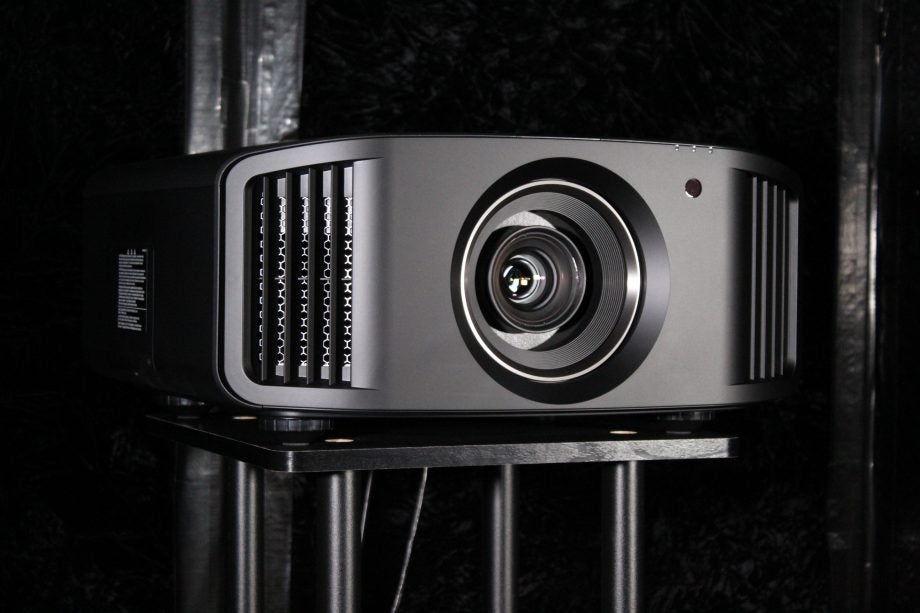

Verdict
The JVC DLA-N7 is the company’s first foray into “affordable” native 4K projection, delivering an impressive performance with standard and high dynamic range content, along with a comprehensive set of features.
Pros
- Genuine 4K images
- Impressive HDR performance
- Excellent blacks and shadow detail
- Comprehensive set of features
- Great build quality
Cons
- 3D is rather dark
- Pricey
Key Features
- Motorised lens controls
- Low input lag for gaming
- D-ILA projection technology
Introduction
The JVC DLA-N7 is the company’s native 4K D-ILA projector, and one of the first to even approach affordability. The N7 costs £8499 – but if that sounds expensive, and it is, don’t forget that JVC’s previous native 4K model was the £35,000 DLA-Z1 laser projector.
The N7 uses native 4K panels, and it also supports high dynamic range and 3D – although, in the case of the latter, a separate synchro emitter and glasses are required. The projector boasts an extensive set of features in general, including lens memories and calibration controls.
Availability
- UKRRP: £8499
- USARRP: $7999
The DLA-N7 is priced at £8499 / $7999, putting this projector very much at top end of the home consumer market.
JVC’s new range of native 4K projectors is headed up by the DLA-NX9, which includes 8K e-Shift, THX certification and costs an eye-watering £18,000. There’s also the entry-level DLA-N5, which comes in either black or white and costs a slightly more reasonable £6499.
Design
- Requires dedicated installation
- Adjustable feet
- Good remote
The JVC DLA-N7 initially appears similar to previous generations, but on closer inspection you’ll notice its slightly larger, especially in terms of the height of the chassis. However, the layout is basically the same with a centrally mounted, all-glass lens flanked by exhaust vents.
The N7 isn’t only big, it’s heavy too. This is a projector designed for a dedicated installation; it isn’t the kind of model you simply whip out for movie night or the FA Cup Final. For that reason there’s no lifestyle option, and as such this particular JVC only comes in matte black.
The projector sits on four adjustable feet that allow you to level the image if placed on a stand or shelf. There are also fixings on the underside, enabling you to mount the N7 upside down on a dedicated ceiling bracket (there’s an option in the menu to invert the image).
Aside from three small indicator lights and an IR receiver, all the connections and controls are at the rear. You’ll also find a second IR receiver at the rear of the device, alongside air intake vents, and the air filters (which can be easily cleaned, if necessary). There’s also a three-pin connector for the provided power cable.
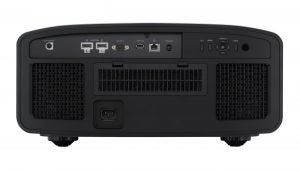
The connections include two HDMI 2.0b inputs that are HDCP 2.2 compatible and fully specified up to 18Gbps, a LAN port for a network connection, an RS232 terminal for serial control and a 12V trigger. There’s also a USB port for firmware updates, and a connector for the 3D emitter.
There are some basic controls at the rear of the projector but the N7 comes with a redesigned remote, and very nice it is too. The new zapper is smaller, well made and more comfortable to hold. It’s also better looking, with an easy to find backlight button at the bottom.
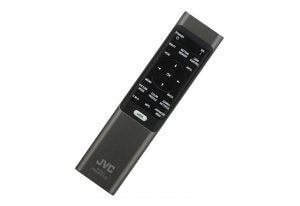
This backlight illuminates the writing on each button, making them easy to read in the dark (which is important in a dark home cinema). The buttons are positioned around centrally located menu and navigation controls, with additional keys for direct access to important functions.
Features
- HDR10/HLG support
- 1900 lumens of brightness
- Low Latency mode for gaming
The JVC DLA-N7 uses three 0.69-inch native 4K D-ILA chips, allowing the projector to deliver a full 4K resolution of 4096 x 2160. It also has a 17-element, 15-group 65mm diameter all-glass lens system, designed to deliver pin-sharp Ultra HD images. The lens is fully motorised with zoom, shift and focus controls, as well as up to 10 memories for different aspect ratios.
The projector supports high dynamic range, specifically HDR10 and hybrid log-gamma (HLG). There’s also a new Auto Tone Mapping function that automatically adjusts the HDR settings based on the content’s metadata, ensuring optimal picture quality for different brightness levels.
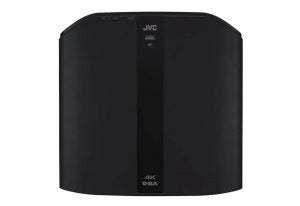
The N7 supports 10-bit video depth, and has a claimed brightness of 1900 lumens (using a 265-watt ultra high-pressure mercury lamp). It also has wide colour gamut that JVC claims can cover more than 100% of DCI-P3, and a claimed contrast ratio of 80,000:1 (more if you use the dynamic iris).
Other features include Clear Motion Drive (CMD) frame interpolation and Motion Enhance, which is designed to optimise the driving of the D-ILA chips and reduce motion blur. There’s a Low Latency mode with a measured lag time of 35ms, which is great news for PC and console gamers.

There’s also the Multiple Pixel Control (MPC) image processor, a six-axis colour management system, and an ISFccc (Certified Calibration Controls) mode. Auto-Calibration uses exclusive JVC software and a third-party optical sensor to optimise image accuracy.
Finally, the N7 supports active shutter 3D, but you’ll need to buy JVC’s separate PK-EM2 3D Synchro Emitter (which plugs into the back of the projector) and some PK-AG3 3D glasses in order to take advantage of this feature.
Set-up
- Flexible in set-up terms
- Requires blacked out room for best performance
- Simple menu settings
The JVC DLA-N7 is extremely flexible in terms of setup but fairly straightforward, despite its inherent complexity. However, it’s worth remembering that this is a dedicated home cinema projector, so you can’t just set it up whenever you’re in the mood for some big-screen action.
The N7 should be properly installed on either a stand or shelf – or, alternatively, mounted on the ceiling using a dedicated bracket. This is an expensive machine, so for the best results you should always use it with a proper projection screen that’s either fixed or motorised.
There’s no point putting a projector such as the N7 in a room with white walls; you’ll simply wash out the blacks and lose any shadow detail. It also isn’t massively bright, so the darker you can make the room, the better the JVC’s overall performance.
The good news is that once you’ve installed the projector, it’s easy to zoom, shift and focus the image thanks to the motorised lens controls. The controls offer a pleasing degree of finesse and there are up to 10 installation modes: useful for different content or aspect ratios.
It’s worth remembering that the N7’s 4K panels are actually 4096 x 2160 pixels, which is wider than the 3840 x 2160 pixels used for Ultra HD content. Depending on what you’re watching, you may have to use the lens controls to increase the size of the image or select the Zoom option in the Installation Mode sub-menu.
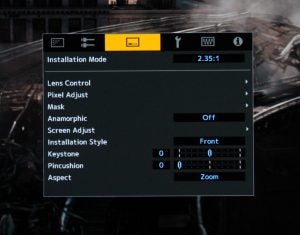
JVC’s menu system keeps things simple, and of the various pictures modes the most accurate for standard dynamic range is Natural. This already uses a colour temperature of 6500K and a colour gamut of Rec.709, then all you need to do is select the appropriate gamma and choose between the manual or dynamic iris.
You should turn CMD off when watching films or TV dramas, but there’s no harm leaving the Low Latency mode on; doing so will automatically turn off CMD. The low Motion Enhance setting can also be useful, reducing motion blur without introducing other artefacts.
The projector will automatically switch to the HDR mode when an HDR10 or HLG signal is detected. However, you can tweak this mode by selecting the 6500K colour temperature and the Rec.2020 colour space, which ensures the N7 is working to its full potential.
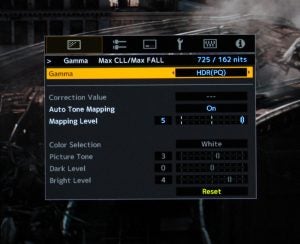
The Auto Tone Mapping feature works very well, reading the HDR metadata and setting up the image accordingly. There is also a Mapping Level slider that defaults to zero for a 100-inch screen, but you can move this control up or down to match your screen’s specific size.
The result is HDR that’s both bright and punchy, but without clipping details in peak highlights. Unfortunately, the projector isn’t always able to read the metadata, and in these circumstances the best approach is to manually adjust the Picture Tone control if the image appears too bright or dark.
Performance
- Excellent with all kinds of content
- Pin-sharp 4K performance
- Punchy HDR
The JVC DLA-N7 is a fantastic all-round performer, regardless of whether you’re watching standard or high dynamic range content.
However, before I cover the picture quality it’s worth mentioning that the N7 is super-quiet. In fact, it’s only 20dB in the Low lamp mode or 28dB in the High lamp mode, and since it’s a native 4K projector there’s also no noise from any e-Shift device.
The projector delivers knock-out SDR images with natural colours, bright highlights, deep blacks, and plenty of shadow detail. The projected image has real pop and depth, along with that all-important film-like quality for which JVC projectors are justly famous.
The all-glass lens and 4K resolution mean that these images are also pin-sharp, especially when the projector is fed Ultra HD material. However, even lower resolution content looks impressive, and the images are free of the noise that’s often present on JVC’s e-Shift models.
Support for HDR may be one of the N7’s selling points but the reality is you’ll still be watching a lot of SDR content for the foreseeable future. The same goes for lower resolution content – and, thankfully, this projector is excellent at upscaling pictures to match its native 4K capabilities.
The motion handling is very good for a projection technology that’s derived from LCD, with minimal blurring and no obvious judder. It’s true that D-ILA doesn’t have the refresh rate of DLP, but JVC’s implementation of LCD is as good as Sony’s SXRD – and better than Epson’s use of LCD.

As soon as you start watching a native 4K source all those extra pixels really come into play, and the resulting images are free of any jaggies or other artefacts. If you want some serious big-screen action then the N7 is for you, and it’s also bright enough to deliver those super-sized pictures without appearing dim.
It’s often said that Ultra HD is about more than just resolution, and that’s immediately evident when watching 4K Blu-rays on this projector. For a start, the 10-bit video depth means that large areas of uniform colour are free from the banding that can often mar regular Blu-rays.
The N7 uses a colour filter to boost the saturation of its colour gamut, and this results in some gloriously rich colours. You really feel you’re getting the full benefit of HDR’s wider colour gamut with this projector, but there’s also a pleasingly subtle and nuanced look to the colours.
While the N7 can take full advantage of 4K, 10-bit, and wider colour gamuts, there’s one aspect of HDR where all projectors struggle: peak brightness. A projector will never be able to deliver the kind of peak highlights that TVs are capable of, with even the brightest only able to reach 200-300 nits.
As a result, a projector has to tone map the HDR content – which can be graded at 1000 or 4000 nits – down to its inherent capabilities. This is always a compromise and projector manufacturers can either try to retain the brightest parts – often resulting in overly dark images – or boost the mid-range luminance, but in so doing miss detail in the peak highlights.
JVC’s solution to this problem is to automatically adjust the picture settings for HDR content, based on its static metadata. This Auto Tone Mapping feature can work extremely well, resulting in some of the best projected HDR images I’ve seen.
Thanks to the N7’s inherent black levels, coupled with a highly effective dynamic iris, this projector is capable of delivering images that have real contrast but which also retain all the detail in the areas just above black. There’s some clipping in the highlights, but that’s preferable to an image that appears too dark.
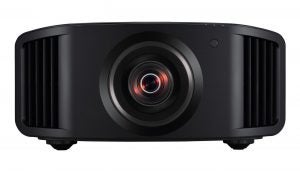
The dynamic iris is particularly useful with HDR content, although you don’t need to use it when watching SDR material. The iris is silent in operation and opens and closes incredibly fast, allowing images to benefit from the projector’s deeper blacks while still taking full advantage of the bulb’s lumens.
The resulting images look suitably bright and punchy, not only from scene to scene, but also when there’s a bright object against a dark background. Most importantly, the dynamic iris never pumps the brightness of an image, and you almost never see it working as a scene moves from dark to bright or vice versa.
The Auto Tone Mapping is very effective but there are times when the projector is, for whatever reason, unable to read the static metadata (4K discs from 20th Century Fox seem to be the worst offenders). In this case you have the option of adjusting the Picture Tone manually, although for most films I didn’t find this necessary.
While 3D is essentially dead as far as TV manufacturers are concerned, the format remains popular with projector owners who feel the added dimensionality results in greater immersion on a seriously big screen. Annoyingly, the N7 is a bit of a mixed bag in this area.
There’s no dedicated 3D picture mode, so you’ll need to create one yourself to get the best results. But it’s worth the effort, and after a bit of experimentation you’ll have 3D images that are completely free of any crosstalk. Unfortunately, it’s also a bit dim and definitely darker than previous generations of JVC projectors.
Why this is remains a mystery, but it’s about the only misstep for what is otherwise a superb projector.
Should you buy it?
You’re a home cinema addict It’s well made, sensibly designed, and the new remote is a winner. The feature set is second-to-none, and the Auto Tone Mapping is an excellent addition that genuinely works as long as the projector can read the metadata.
You can’t afford it There’s no doubting that the JVC is a pricey unit, putting it out of reach of many home cinema fans. If you can stump up the case though, it’s well worth it.
Verdict
The JVC DLA-N7 is the company’s first foray into “affordable” native 4K projection, delivering an impressive performance with standard and high dynamic range content, along with a comprehensive set of features.








